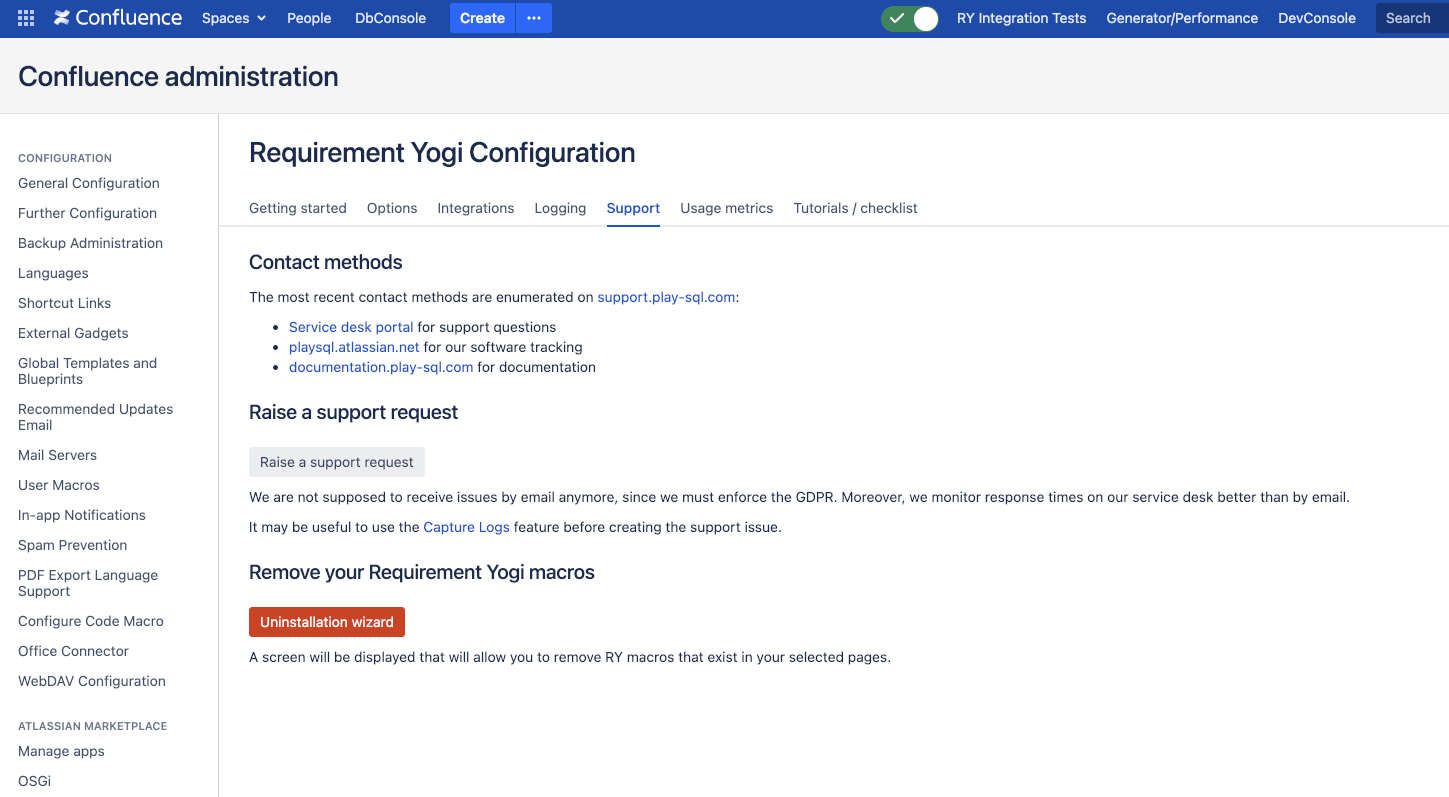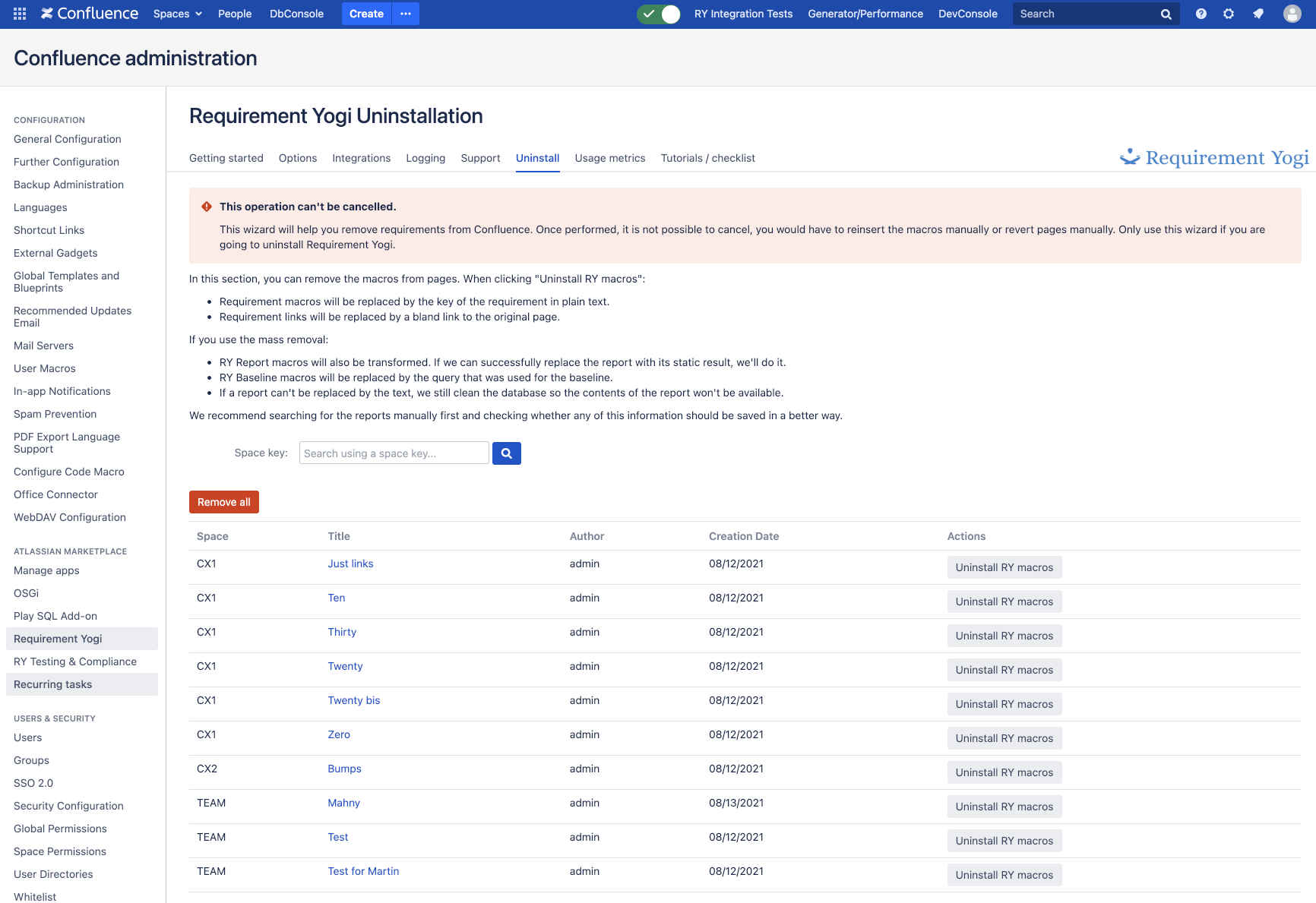Using a new version of Requirement Yogi?
We’ve improved the migrations! Please head to Migration to the Cloud.
There was no automated migration path to the cloud until 3.5.0. If you were using Requirement Yogi 3.4 or lower, this page explains how to transform requirement keys to text, then transform them back to keys in the Cloud.
Before migrating to the Cloud
Things to know:
-
We don't have baselines on the Cloud. It is a younger product with fewer features.
-
It is more difficult to see the requirements on the Jira issues.
-
We don't have an assisted migration path yet. Baselines, traceability matrixes, reports, and links in Jira will be lost and have to be re-created manually.
-
Both Jira and Confluence should be in the Cloud, or on Data Center, but we can't "mix" requirements from both instances.
Overview of the migration
Our only migration path is to remove Requirement Yogi, migrate, and use the transformation tool on the Cloud to transform the pages back.
1. Prepare the migration
The database
Before you start, perform an entire backup of the database and of Confluence. All the data of Requirement Yogi will be destroyed (baselines, traceability matrixes) and macros removed from Confluence pages.
In Jira
In Jira, nothing will be migrated to the cloud. We suggest exporting your data to Excel to be able to recreate it.
Be aware that Confluence Cloud can only connect to Jira Cloud, and Confluence Data Center only to Jira Data Center. It is not possible to migrate one side, then another.
In Confluence
|
The first step is to replace all Requirement Yogi macros on pages, with simple text (the requirement keys). In Confluence, go to the administration of Requirement Yogi, on the tab "Support" → Uninstallation wizard. |

|
|
Then, use the page to remove the macros from all pages and replace them with simple text: |

|
After this, Requirement Yogi will have deleted all the macros, but also all the records in its database, the traceability matrixes, history of requirements in baselines, links to Jira, etc.
2. Migrate
Use Atlassian's migration tools to move your pages to the cloud.
3. Transform the pages again
|
On the cloud, go through each page which contains requirements, and use the menu → Requirement Yogi to display the transformation dialog: |

|
|
The transformation dialog should be preconfigured, just click "Transformation options" → "Transform and save" to transform the page. |

|
4. Recreate the Jira links
After transforming the pages:
-
Go to Jira,
-
Setup Requirement Yogi in Jira,
-
Go to each Jira issue and recreate the links to Confluence requirements.
All Done!
As of January 2022, here is our next milestones for the Cloud:
-
Better transformations for pages. We want to make it possible to transform documents the most easy way possible.
-
Certainly features such as vertical tables, requirements in paragraphs, and improvement of the traceability matrix.
-
The next major feature after those will be the baselines.
Features which won't be available:
-
The Alt + Shift + R shortcut won't work in the Cloud. We have a wizard to assist with automatically replacing requirements.
-
The inline popup, as it used to exist for Server, is replaced by a full page in the cloud, which requires clicking on it.
-
The coverage and dependency matrixes, which wasn't popular. The traceability matrix retrieves the same results in a better way.
